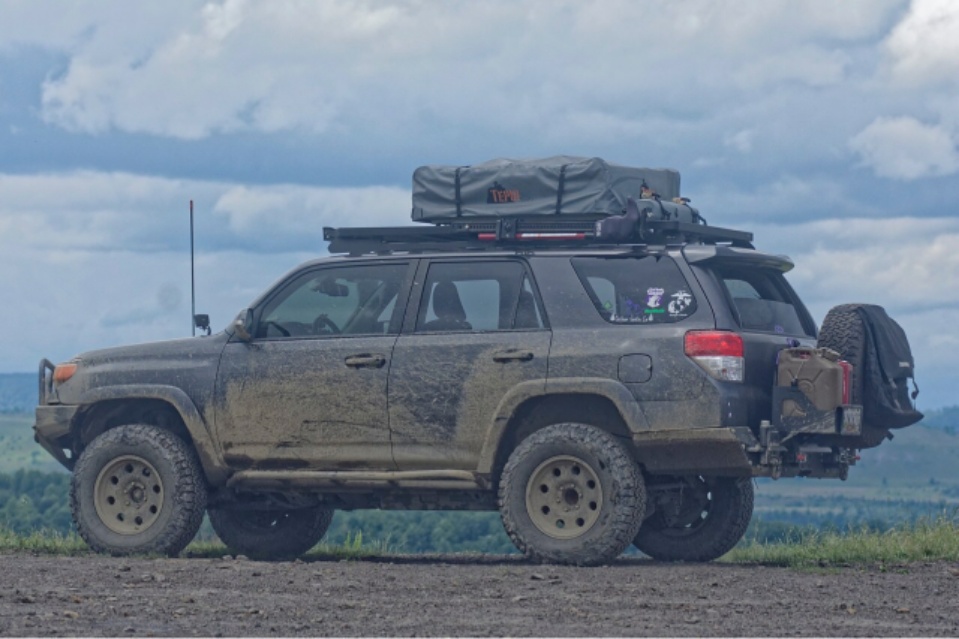The Red Clay Rally (RCR) is *not* a race. It is an annual three-day timed event where the goal is to complete each stage as close to a predetermined GPS “track“ as possible. Competitors travel through a specified route and to observe the culture and meet the people of the region while traversing some of the toughest, challenging, unkempt roads in that area.
Requirements and Information for the Red Clay Rally
Requirements to participate in the rally are very specific, and the information provided ahead of time is very limited. Vehicles are required to be “dependable” and equipped with at least a 31” tire, a full sized spare, and extra fuel. The vehicle also has to be lifted and fitted with “true 4 wheel drive.” Note: In the previous year’s rally, AWD Subarus were allowed. However, due to problems with multiple Subaru teams blocking the trail …the 2018 rules were amended to not allow them to compete.
Very little location information is released to competitors prior to the start of the rally. Competitors do not have access to the complete mapped route, or final rules until 1 week before the start of the rally. This prohibits teams from running the route ahead of time. The only information provided is the starting and ending Locations for the RCR.
In addition to surviving the route, teams have to collect as few penalty points as possible, stay together as a team, and finish as a team. Believe it or not, there are a many ways to earn penalties, for example:
- If a team hits their checkpoint too early, they are penalized 5 points for each minute they are early.
- If a team checks in late, they are penalized 1 point for each minute they are late.
- If any team blocks the trail for more than 15 consecutive minutes, they are disqualified.
- If a team shows up to all checkpoints cumulatively 20 minutes early, the team is disqualified.
Moreover, Competitors are not to talk about Red Clay Rally… not to the locals, not to law enforcement, not to anyone in any area the rally travels through. Teams are not allowed to put any Rally identifying marks on their vehicles, nor team numbers. Teams were also made aware to not trust any other team because they might purposely be deceptive, give wrong information, or directions.
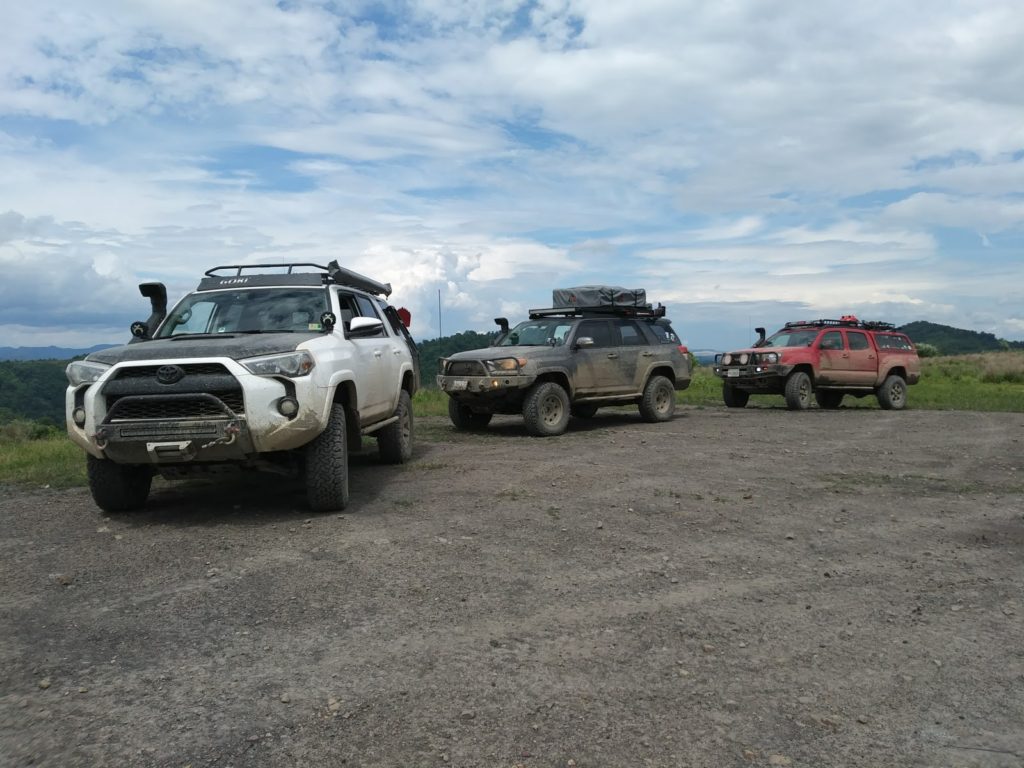
Competitors are provided the final GPS “track” a week before the start so they could download their maps. Each stage has an amount of time it should take for the track to be completed associated with it. We did not know the location of each checkpoint, so it was impossible to cut corners or skip any part of the GPS track. Additionally we did not know what the terrain would be like, so trying to speed up or slow down could hurt our team. There were several sections of trail that teams could get extra credit points to reduce their overall score, however it was risky because those sections would take more time and the condition of the extra credit trail was unknown. This could potentially result in recoveries that could take even more time and add points to the end score for the day.
Rally Preparations
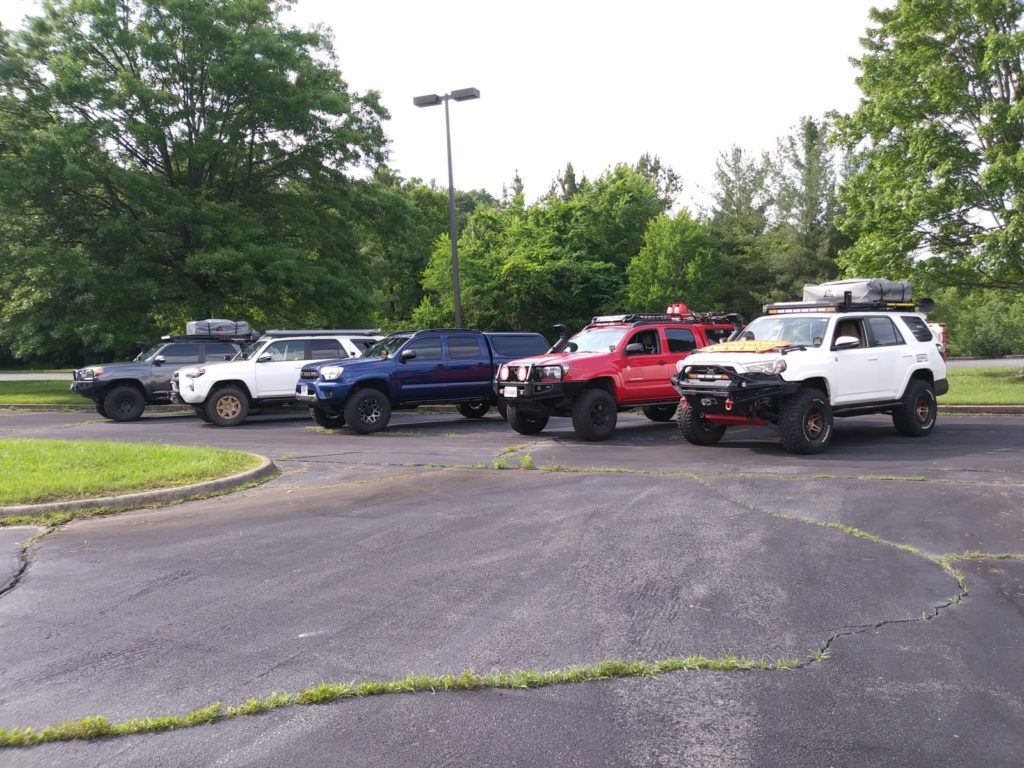
Our two teams registered to run the rally in August of 2017, so we had 10 months to prepare. We had a total of five vehicles: Team 99 consisted of myself driving my 2013 Toyota 4Runner SR5, and my good friend Tom driving his 2016 Toyota 4Runner Trail Edition. Team 98 was made up of our friend Mark with his 2006 Toyota Tacoma (with 201k on the odometer!), Steve driving a 2015 Toyota Tacoma, and lastly Pete driving a 2016 Toyota 4Runner SR5.
Preparing for the rally was a daunting task because we did not know what types of terrain we would be getting into, nor the areas we would be driving. None of our vehicles were set up the same, but all had suspension lifts with at least a 33” tire. Most of us had been running our current suspension setup for a while and the thought was to get out, wheel the trucks in the preceding ten months’ time, gain more experience, and tighten up any loose ends. We all agreed making any large last minute changes could have an effect on how we were able to run the rally. The organizers had warned us that the biggest failure the year before had been brakes. We all made a point to change out our brake pads, as close as we could to the start of the rally.
Loving to tinker with our machines, a few of us did decide to add new solid plate steel bumpers on the front, rear, or both to increase our departure angles over obstacles and to give us better recovery points in the event that we got stuck and recovery was required. We reviewed safety procedures for winching to verify that we were well versed in proper winching. We put together a collection of tools, fluids, and spare parts that might fail, ensuring that if we did have a problem that we would be well prepared to fix them. After all, we still had to drive the trucks home after the rally was over.
Recovery gear was one of the most important items needed, and we compiled our own list of gear that we would have on board. Items such as: snatch straps, tree savers, soft shackles, kinetic ropes and snatch blocks. Three of the five trucks had an on board winch, and those owners were responsible for making sure the winch line was properly cleaned, tensioned, and the winch was in good working order.
Finally, we all made sure that we completed any maintenance items and went over our vehicles with a fine tooth comb. We changed fluids, checked wheel bearings, tie rods and lubricated suspension parts to make sure we would not have a catastrophic failure that would knock our team out of the finish.
The Big Moment: Running the Rally
All competitors were to arrive at Borla International in Johnson City, Tennessee by Friday morning at 6am. Our team opted to check in on Thursday night and get as much information as we could, instead of waiting until Friday morning. We met Thursday evening, checked in at Borla then headed out for a team dinner and drinks to build some comradery and discuss our vehicles and driving order/position.
On Friday morning we returned to Borla and the organizers took a roll call. A total of 52 teams consisting of 133 vehicles checked in to begin the Rally on day 1.
After some strategizing, we felt it was necessary to be one of the first to leave Borla to avoid getting caught in “Rally traffic” and potentially not be able to get fuel after 100+ trucks had fueled up in some of the smaller towns. Once roll call concluded we quietly positioned our vehicles near the starting point – effectively cutting off another team attempting to do the same thing.
Teams were released in two minute increments to allow for them to get down the road before encountering traffic. Releasing the teams would take the organizers the better part of two hours. We felt starting early and getting to camp early would benefit our team as we would be done for the day and have time to discuss tomorrows track. According to the GPS, we would spend roughly 7-8 hours in the trucks, with little time for breaks.
Our team set off just after 0700, and the majority of the day was a combination of freeway and skinny winding paved roads through small coal towns. We pushed the vehicles to their limits, trying to keep on route and on time. We missed several turns and had to turn around to get back on route. We quickly learned that having a dedicated navigator – in at least the lead truck – was absolutely necessary. Looking on the map it was impossible to tell which sections were paved and which were dirt. So we tried to keep as close to the GPS times as possible.
We rolled into camp in West Virginia at the end of the day, after completing an incredibly steep hill climb with very loose terrain.
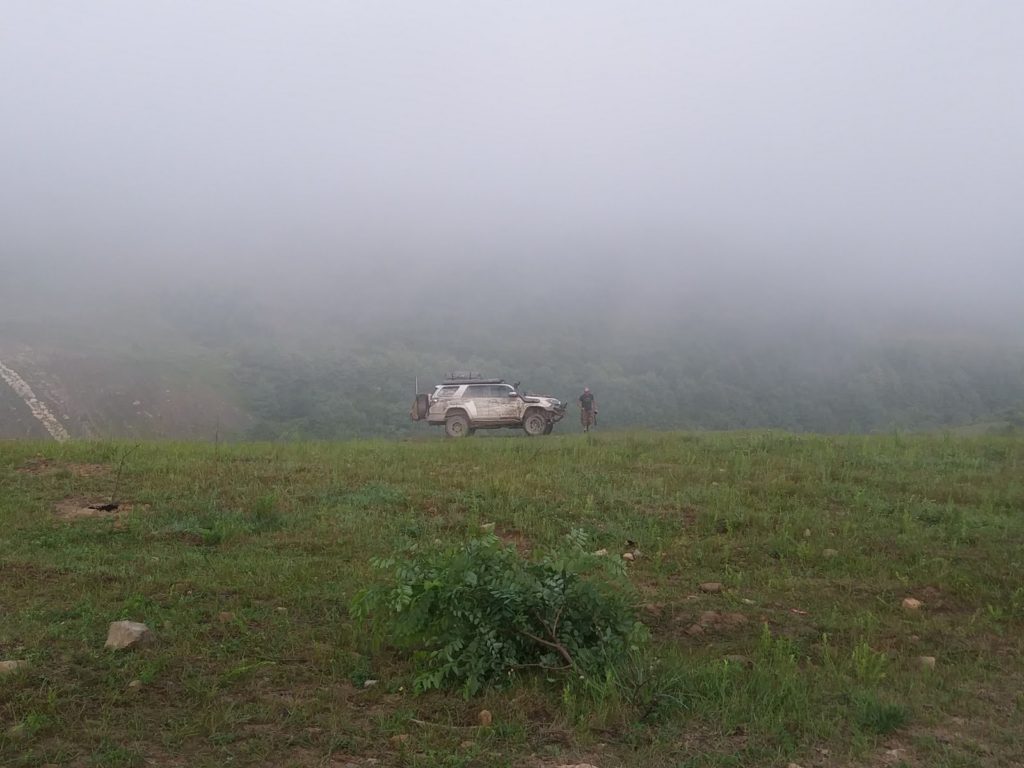
On the top of the mountain was one of the best views we’d ever had camping. We had made it through day one, mostly unscathed. One driver on our team reported having some ABS activation issues, so he chose to go home and not continue to the end. Our team of five was knocked down to four. At the end of the day after everyone had checked in, we were pleased to find out that our two teams were in 12th place for the day. We had several late check-ins, so we were penalized for those. Our goal was to leave at the beginning of the pack, for day two.
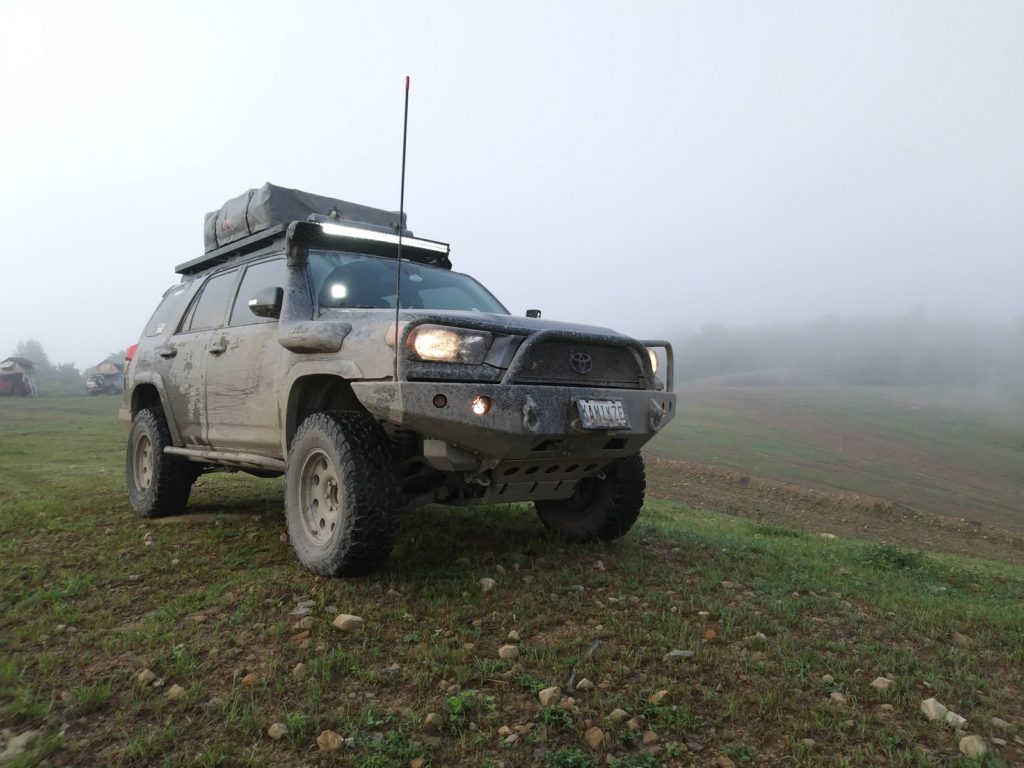
Some confusion at the beginning of day two had all teams leaving “on their honor.” In retrospect this was a disaster, as we all tried to check in at the organizer’s camp site and were told to just leave at our specified time. We ended up leaving 10 minutes late, felt a bit slighted, and we would now need to make less stops. The team that left in front of us had a Jeep bringing up the rear with a clearly visible broken shock mount, that would slow us down. The day started with us driving through dirt packed mountain roads, and evolved into many different types of terrain including several miles next to railroad tracks.
Day 2 – brought us less pavement and extra credit challenges. We watched as a land cruiser attempted to drive up one of the extra credit sections. It was a longer steeper hill with loose terrain. The truck did not have enough power to make it to the top sliding back down the hill, nearly toppling over sideways. We wisely chose to skip that section and continue on. At the end of the day, we were one of the first teams to finish, and when we came upon the last checkpoint we were told that he (the checkpoint official) was in the wrong location due to a communication error. We were a bit annoyed that we (and about 30 other trucks) had to turn around. We chose to not camp with the big group and found a great secluded campsite in the Kentucky Mountains up on a ridge a couple miles from the rest of the competitors.
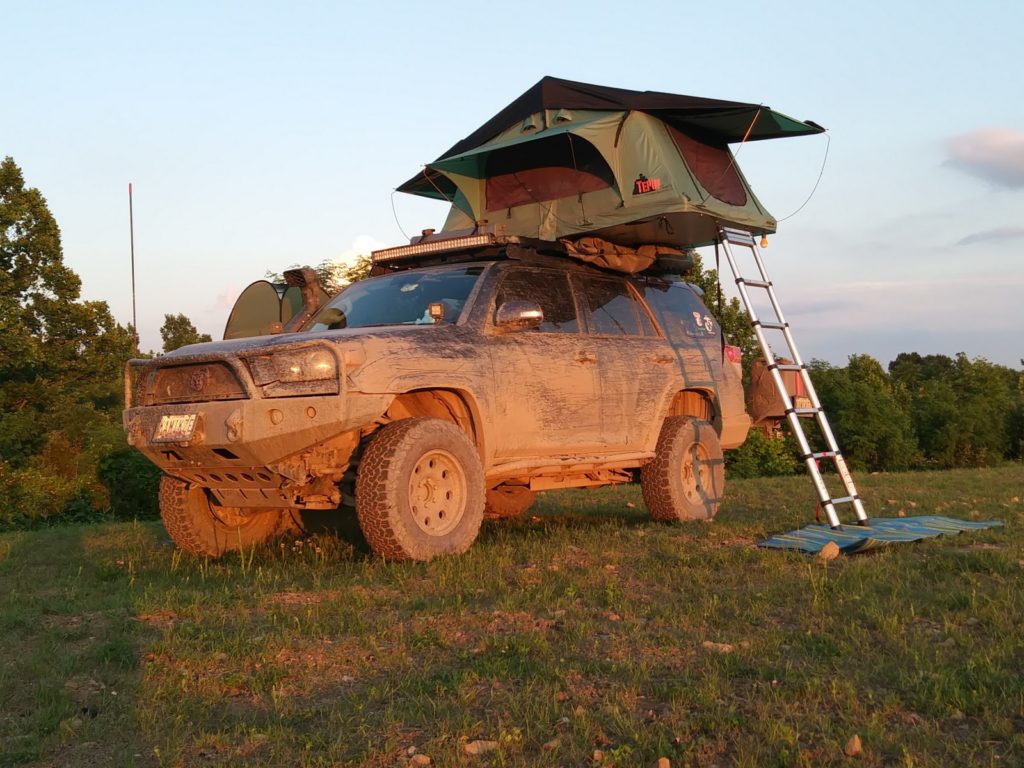
There were wild horses that wandered past our campsite and later in the evening a couple of old guys rolled up on their RZR to invite us back to their area for more exploring. We dragged a huge dead tree to our site and set up a large fire. After dark, some friends recognized our vehicles and rolled into our camp. They looked defeated and exhausted. They had suffered a vehicle failure due to an idler pulley seizing earlier in the day, resulting in a 45 minute drive out of their way to get the part at a Toyota dealer and then repair the truck. They continued on to the last checkpoint and were disqualified due to their late arrival time. Our team had finished day 2, in 11th place.
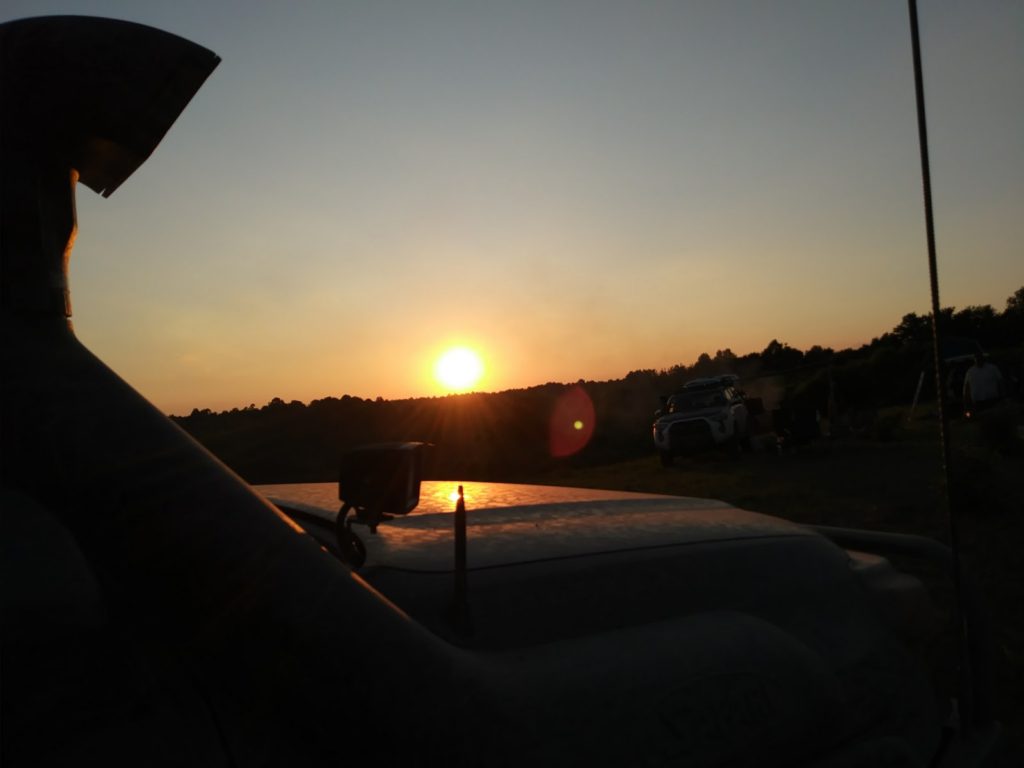
Much like the day before, Day 3 began with us not knowing what time we were to depart, so we made sure we were up early to pack up camp. We sent one teammate to the organizer to pick up our time sheet and identify our departure time. Due to several teams arriving late they had shifted departures to 0800 instead of 0700. This afforded us some extra time to take photos and discuss the route. Since we had a few early arrivals at checkpoints throughout day 2 (taking on additional penalties) we departed camp a few minutes later than our designated departure time at 0825.
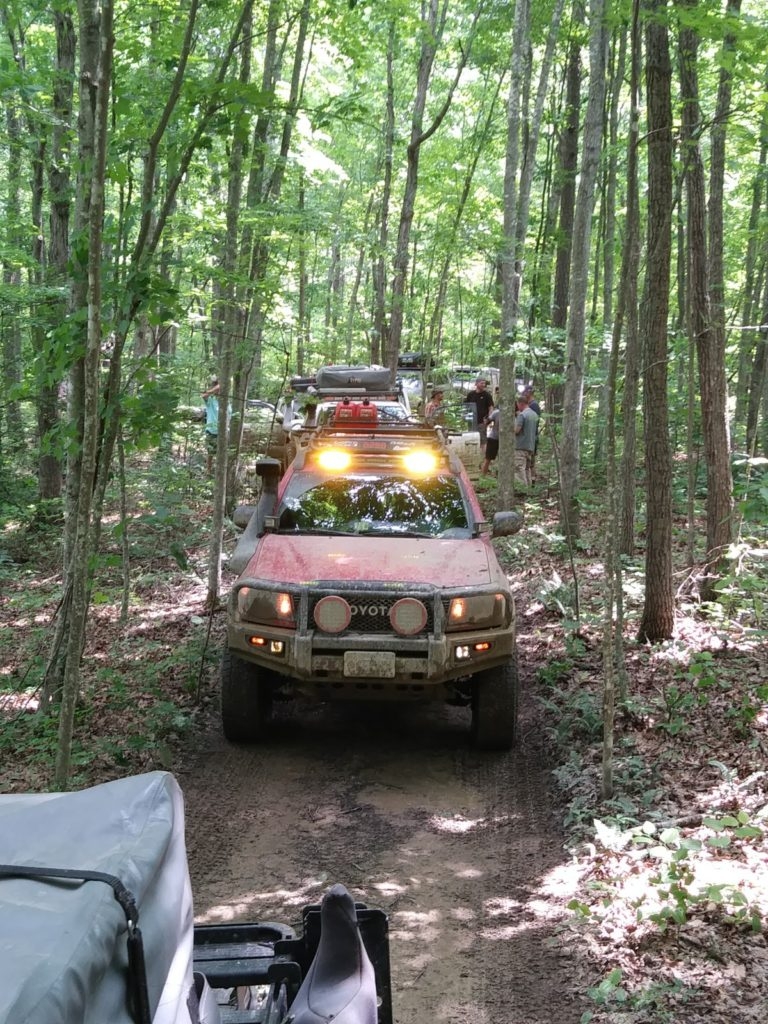
Day three terrain started out on some of the tightest trails in terms of brash and trees. The constant scraping for the first mile or two unnerved some of our teammates.
As we continued, there was a lot of thick heavy mud and much of the route took us through heavily wooded areas. There was also more traffic on the trails as vehicles were getting stuck, breaking down, and not having the appropriate tools to get through the woods. We ended up with two trucks on our team that started to overheat due to the thick layer of mud that caked on the radiators. Fortunately we caught it early and we were able to use our pressurized water tank to rinse them off until we could find a car wash along our route. Two of us got stuck and required recovery. We were able to pull both vehicles individually in less than ten minutes each, so as not to be penalized or disqualified for blocking the trail. Later in the day, another team was limping along with a broken vehicle and were effectively blocking the route. Getting around them was a challenge but we eventually we forced our way around got past. The route eventually doubled back on itself, and we found ourselves held up for over an hour because an FJ Cruiser had overturned when the ABS locked up on a gravel curve and sent it into a ravine. Fortunately it had been stopped by a large tree, but the truck was more or less totaled. Eventually they were able to winch themselves out and the driver was unharmed. We saw several other vehicles with broken windows and heard of a few with snapped axles.
We made it to the last checkpoint on day 3 with what we felt was a good end time and all team members in fairly good shape. Continuing on some more fun and challenging trails before hitting the pavement to the finale at a brewery in Lexington to celebrate and find out our final score.
At the brewery we were finally able to relax and get some real food and much needed drinks. We waited patiently for the rest of the teams to show up so the officials could announce the winners. After traveling through 32 counties, 4 states, traversing over 500 miles, and putting our trucks through the stress of a fast paced three days, only 22 teams finished the Rally. Our two teams came in 7th place! We were incredibly proud of our finish and had a blast doing it. We look forward to running Red Clay Rally again next year and can’t wait to see what the organizers have in store for a new route.
If you’re interested in learning more about the RCR, or joining us next year, here are some useful links:


